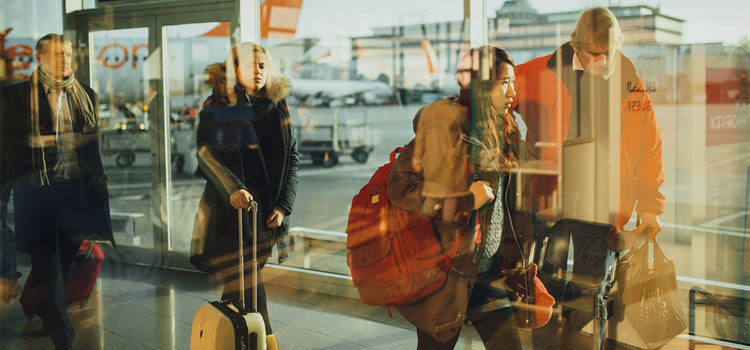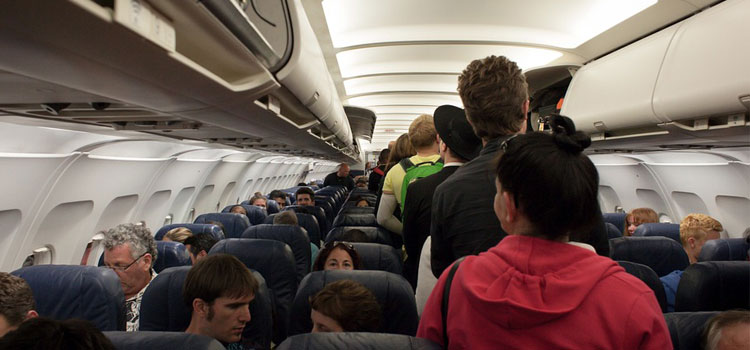Here’s the secret to staying healthy no matter where you’re traveling.
Come what may—cold, flu, norovirus—certain travelers manage to jet-set all over the world, attend the most crowded events, and rarely get sick. If you’re not one of the lucky few, there are still some ways to mitigate the negative health effects of frequent travel. Here’s what you need to know.
BEFORE YOUR TRIP

1. Strengthen your immune system. The scientific evidence on the powers of supplements to prevent cold and flu isn’t yet conclusive, but it doesn’t hurt to take them if they’ve worked for you in the past, says Phyllis Kozarsky, M.D., the Centers for Disease Control’s travelers’ health consultant. A frequent traveler herself, she favors probiotics to boost gut health.
2. Pack these items in your carry-on: Hand sanitizer with at least 50 percent alcohol; disinfecting wipes (such as Clorox or Lysol); a light shawl or coat that can be used as a blanket; a travel pillow (on a long-haul flight or train trip); bandages; and nasal spray.
3. Wear glasses instead of contact lenses. Contact lenses can dry your eyes and make them vulnerable to microbial invaders. Wearing glasses also makes you less likely to touch or rub your eyes.
AT AIRPORTS, TRAIN STATIONS, AND OTHER PUBLIC SPACES

1. Stay at least six feet away from people who are coughing, sneezing, or who simply look sick. That’s the distance tiny virus-filled droplets can travel when exhaled by a flu-infected person—landing in your eyes or nose and ending up in your respiratory system.
2. Sanitize hands after touching germy hot spots: For instance, the ticket kiosk, ATM, security-line bins (have you seen anyone clean those between use?), door handles, dining trays and tables, and anything in the bathroom. “If it’s touched by a lot of people, it’s a potential problem,” says Vincent Racaniello, Ph.D., professor of microbiology and immunology at Columbia University, and founder of a blog about viruses. Use sanitizer on all parts of your hands, making sure to include fingertips and any rings. If you can’t clean right away, at least be mindful of not touching your hands, nose, and mouth.
3. Treat public bathrooms as the germy cesspool they are. Do not put your bags on the floor, or your toiletry kit on the counter (if you must, then use disinfectant wipes afterward). Do your business without sitting on the toilet. Close the lid before flushing, or, if there isn’t one, flush as you leave, to minimize spray-back. Avoid touching surfaces with hands. Wash hands with soap and water for a full 15 seconds before you leave. Use your drying towel to exit without touching the door handle (if you can’t, then use hand sanitizer after you leave the bathroom).
4. Wear socks through the security line of an airport. The chances of getting a fungal infection are low—you need a damp floor for that to happen—but you may pick up something on your feet, which then gets transmitted onto your hands as you put your shoes back on (and then your face).
5. Buy a bottle of water (or two) before boarding on a plane. While the tap water on-board has greatly improved in the last 10 years, random samplings have still every so often picked up fecal bacteria, says Charles Gerba, Ph.D., professor of microbiology & environmental sciences at the University of Arizona in Tucson. If you anticipate brushing your teeth or splashing your face during your flight, use bottled water.
ON A PLANE OR TRAIN

1. Prep your seating area. Flight crews have little time to disinfect between flights, so break out the wipes and tackle the backseat tray table and latch, armrests, headphones, digital screens, and window shutters. Cold and flu viruses can live a few hours to three days on inanimate surfaces. “Norovirus is particularly hardy and can live up to four weeks,” says Gerba. Trade the standard-issue blanket and pillow for your own. And use your carry-on as storage instead of your backseat pocket. After all, how can you be sure that the passenger before you didn’t put a dirty diaper or used tissues inside?
2. Point the overhead air vent down so the current flows vertically in front of your face. This helps divert potentially infectious droplets away from your eyes, nose, and mouth. If your nose feels dry, refresh with nasal spray—keeping the mucus membrane moist will increase its ability to fight infectious microbes, says Gendreau.
3. Use your hand sanitizer throughout the trip—particularly: after putting your luggage away (lots of people touch the handles); after you read the magazine in the back pocket; and after you get out of the bathroom. “The longer the flight the greater the number of infections that can be expected,” says Harunor Rashid, M.D., an epidemiologist with The National Centre for Immunisation Research & Surveillance, in Sydney, Australia.
4. Pay attention to your armrest if you’re in an aisle seat. In a 2008 Centers for Disease Control investigation of a norovirus-infected flight between Boston and Los Angeles, aisle-seat passengers were particularly vulnerable. These armrests are often touched by passengers heading in and out of the restroom, says Gerba—and most people don’t have clean hands.
5. Notify a staff person if you notice someone who is visibly ill. If possible he or she can move the passenger away from you (and others, depending on the situation), and if it’s a respiratory problem, they will provide a face mask. But it’s not just the person sitting next to the sick passenger that’s vulnerable to cold or flu viruses: The conventional wisdom is that the two rows in front and in back of the sick person are most vulnerable, but in an “Emerging Infectious Diseases” paper published earlier this year, a passenger was, in fact, infected by the initially flu-infected person eight rows away.
USING GROUND TRANSPORTATION

1. Find the least crowded spot possible on buses and subways. There’s no bathroom on these vehicles, and the trip is usually short, so the risks are smaller than on a plane or long-haul train. However, close contact makes you vulnerable. You’re not entirely in the clear when taking a cab if the driver is coughing, says Racaniello, but you can open the window to help aerate the space.
2. Take a seat. “Sitting is better than standing,” says Racaniello. Seats are less contaminated than poles and straps—both of which are very much so. If you must hang on to one, make sure not to touch your face during the ride.
3. Sanitize your hands after leaving buses, subways, and taxis. Whether you touched the ticket turnstile, or swiped the screen on the cab, or are just not sure, clean your hands. In a 2011 BMC Infectious Diseases paper, British individuals were at six times higher risk for contracting flu during winter if they use a bus or tram compared to if they never do.
Thanks to CNTraveler for these health travel tips!


![5 Perfect Muscle-Building Foods! [VIDEO]](http://FitPhreak.com/wp-content/uploads/2016/04/2016-04-19_1513-223x145.jpg)







![Morning Kick Start Tips! [VIDEO]](http://FitPhreak.com/wp-content/uploads/2016/06/morning-tips-223x145.jpg)


